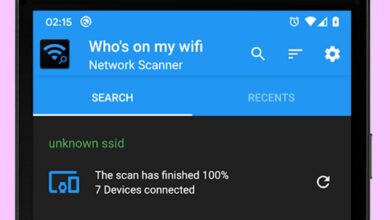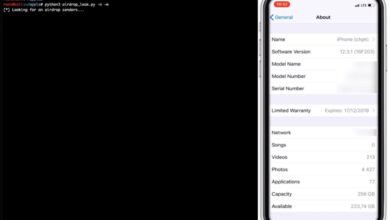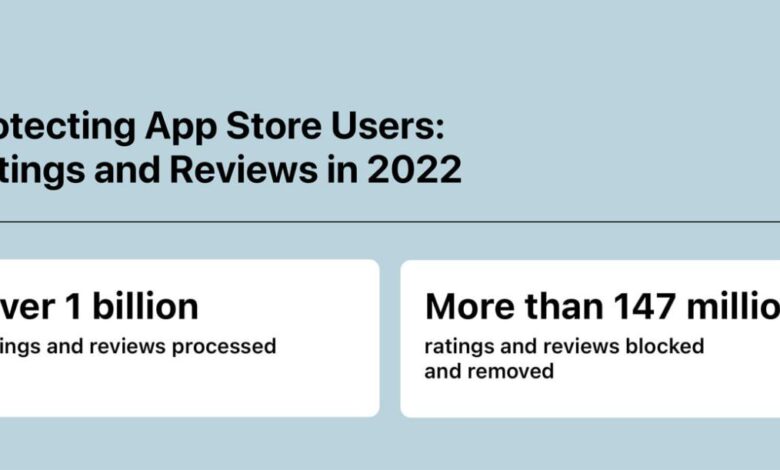
Apple Brings Back Fraudulent App Reporting
Apple brings feature back that allow users to report fraudulent apps – Apple brings back feature that allow users to report fraudulent apps—a move that’s been met with widespread applause! For a while, this crucial reporting mechanism was absent, leaving many users feeling vulnerable to malicious apps lurking in the App Store. This post dives deep into the reinstated feature, exploring its functionality, comparing it to its predecessor, and examining its impact on the overall App Store ecosystem.
We’ll also look at Apple’s broader strategy in combating fraudulent software and what the future might hold for app security on iOS.
The return of this reporting tool is a significant step toward a safer App Store. Think about it: before its reinstatement, users had limited options if they stumbled upon a scam app. Now, they have a direct line to Apple, empowering them to help cleanse the digital marketplace. This isn’t just about individual protection; it’s about fostering a healthier environment for developers and users alike.
We’ll unpack the details of how this improved reporting system works and what difference it’s expected to make.
The Restored Reporting Feature
Apple’s recent reinstatement of its fraudulent app reporting mechanism is a welcome development for users concerned about malicious software on the App Store. This feature, absent for a period, allowed users to directly flag potentially harmful applications, playing a crucial role in maintaining the platform’s security and trustworthiness. Its return signifies a renewed commitment to user safety and a proactive approach to combating fraudulent activity within the App Store ecosystem.
The Functionality of the Restored Reporting Mechanism
The reinstated reporting system allows users to directly report apps they suspect are fraudulent or violate Apple’s App Store guidelines. This involves navigating to the app’s page in the App Store, typically locating a “Report a Problem” or similar option within the app’s description or settings. Users can then select the reason for reporting (e.g., fraudulent behavior, inappropriate content, or a violation of Apple’s terms of service) and provide additional details or supporting evidence.
Apple reviews these reports and takes appropriate action, ranging from removing the app from the store to contacting the developer. The process aims to be quicker and more efficient than its predecessor.
The Previous Reporting System and its Removal
The previous reporting system, while functional, suffered from several limitations. It was often perceived as cumbersome and less user-friendly, with a convoluted reporting process that sometimes lacked clarity. The response time to reports could be lengthy, leaving users feeling frustrated and vulnerable. Additionally, the system’s feedback mechanisms were inadequate, failing to provide users with updates on the status of their reports or explanations for any actions taken.
The exact reasons for its removal were never publicly stated by Apple, but it’s likely that a combination of these factors contributed to its eventual phase-out. It was possibly deemed inefficient or in need of a significant overhaul.
Apple’s reinstated fraudulent app reporting feature is a welcome move for user safety. Building secure apps is crucial, and understanding the development landscape is key; check out this insightful article on domino app dev the low code and pro code future to see how platforms are evolving. This improved reporting system should help weed out malicious apps, boosting overall app store trust and security.
Comparison of Old and New Reporting Systems
The new reporting system addresses many of the shortcomings of its predecessor. It boasts a simplified user interface, making the reporting process significantly easier and more intuitive. Apple likely invested in improving its backend infrastructure to ensure faster response times to user reports. While specific details on improvements to the feedback mechanisms remain undisclosed, it’s reasonable to assume enhanced communication with users regarding the status of their reports.
| Ease of Use | Reporting Options | Response Time | User Feedback |
|---|---|---|---|
| Old System: Difficult, convoluted process | Old System: Limited options, unclear categorization | Old System: Slow, often weeks or months | Old System: Minimal or no feedback |
| New System: Simplified, intuitive interface | New System: More comprehensive options, clearer categories | New System: Significantly faster, likely within days | New System: Improved communication, likely status updates |
Impact on App Store Ecosystem
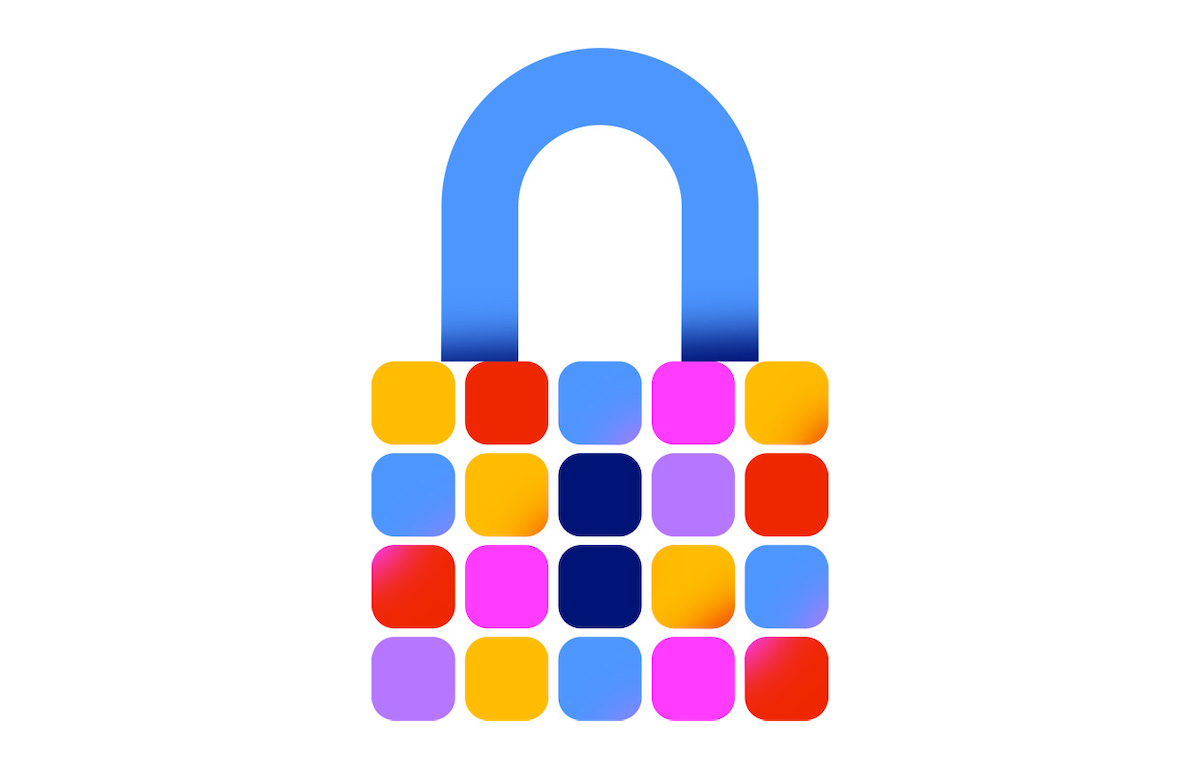
The return of Apple’s fraudulent app reporting feature is a significant development with far-reaching consequences for the App Store ecosystem. Its reintroduction promises a renewed focus on security and user protection, potentially reshaping the landscape for both app developers and users. The impact will be felt across several key areas, influencing the prevalence of malicious apps, user trust, and developer practices.The restored reporting mechanism will likely lead to a decrease in the number of fraudulent apps available on the App Store.
With users empowered to directly flag suspicious applications, Apple’s review process will be supplemented by a larger, more distributed network of watchful eyes. This increased vigilance should make it more difficult for malicious developers to slip through the cracks and distribute their harmful software. The quicker identification and removal of fraudulent apps will create a safer environment for users, reducing their exposure to risks like data theft, financial scams, and device compromise.
User Protection from Malicious Software
This improved reporting system offers several ways to protect users. For example, imagine a user downloading an app that seems legitimate but secretly installs malware. With the reporting feature, they can quickly alert Apple, leading to a prompt investigation and the removal of the app from the store, preventing other users from falling victim. Similarly, apps disguised as popular games or utilities, but actually designed to harvest personal information, can be identified and removed more efficiently.
The quicker response time to user reports will drastically reduce the window of opportunity for malicious apps to cause damage.
Developer Behavior and App Development Practices, Apple brings feature back that allow users to report fraudulent apps
The reinstated reporting feature will undoubtedly influence developer behavior. Knowing that users have a direct line to Apple to report suspicious activity, developers will be less likely to attempt to publish fraudulent or malicious apps. This increased accountability could encourage developers to prioritize security best practices during the app development process. We might see a rise in the use of secure coding techniques, rigorous testing procedures, and more transparent data handling policies, all in an effort to avoid being flagged by users and facing potential repercussions from Apple.
This could lead to a higher quality and more trustworthy pool of applications in the App Store.
Improved Trust and Security within the App Store Ecosystem
The improved reporting mechanism will foster greater trust and security within the App Store ecosystem. Users will feel more confident in the safety and legitimacy of the apps they download, knowing that there’s a robust system in place to address fraudulent activity. This increased trust can translate into increased user engagement and a more vibrant app market. Furthermore, the enhanced security will attract more developers who prioritize building secure and reliable apps, further strengthening the overall quality and reputation of the App Store.
A positive feedback loop is created, where increased user trust attracts more legitimate developers, further enhancing security and fostering a healthier ecosystem.
User Perspective and Experience
The return of Apple’s fraudulent app reporting feature is a welcome change for users, promising a safer and more trustworthy App Store. Understanding the user journey and potential challenges is crucial to maximizing the effectiveness of this vital tool. A smooth and intuitive reporting process will encourage users to actively participate in maintaining the integrity of the App Store ecosystem.The user experience should be straightforward and efficient, minimizing friction and maximizing the likelihood of successful reporting.
This requires careful consideration of the user’s perspective at each step of the process. A poorly designed reporting system can lead to frustration, discouraging users from reporting fraudulent apps and ultimately undermining the system’s effectiveness.
User Journey When Reporting a Fraudulent App
The ideal user journey begins with the user identifying a potentially fraudulent app. They then navigate to a clearly labeled reporting option, perhaps within the app’s information page on the App Store. This option could be a button or a link prominently displayed, clearly stating “Report a Problem.” Clicking this initiates a streamlined form. The form should request relevant information, such as the app’s name and developer, a brief description of the fraudulent activity (e.g., malware, phishing, deceptive marketing), and ideally, screenshots or screen recordings as evidence.
The user then submits the report, receiving an acknowledgment message indicating that Apple has received their report and will investigate. Throughout the process, clear instructions and progress indicators should be visible. A simple progress bar indicating the completion percentage of the report submission would enhance the user experience. Finally, a confirmation screen with a reference number for tracking purposes would complete the process.
Potential Challenges Users Might Face
Users might encounter several challenges. The reporting form might be too complex or lengthy, requiring excessive information that discourages quick reporting. Ambiguous instructions or unclear fields could confuse users, leading to incomplete or inaccurate reports. Technical difficulties, such as slow internet connections or app crashes, could interrupt the reporting process. A lack of feedback after submitting a report could lead to uncertainty and frustration.
Finally, users might be unsure what constitutes fraudulent activity, leading to hesitant reporting or incorrect categorizations.
User Interface Mock-up for the Reporting Process
Imagine a simple form. At the top, a clear heading: “Report a Problem with this App”. Below, fields for: “App Name” (auto-populated), “Developer Name” (auto-populated), “Problem Type” (dropdown menu with options like “Malware,” “Phishing,” “Deceptive Marketing,” “Other”), “Description of Problem” (text box with a character limit indicator), and “Supporting Evidence” (option to upload images or videos). A progress bar below these fields visually tracks the submission progress.
At the bottom, a prominent “Submit Report” button and a small print indicating “Your report has been submitted. A reference number will be provided shortly.”
Common User Concerns and Potential Solutions
Let’s address common concerns and potential solutions:
- Concern: The reporting process is too long and complicated. Solution: Simplify the form, minimizing required fields and using clear, concise language. Offer a quick report option for urgent issues.
- Concern: Lack of feedback after submitting a report. Solution: Provide immediate confirmation with a reference number, and potentially follow up with an email update on the status of the investigation (within a reasonable timeframe).
- Concern: Difficulty understanding what constitutes fraudulent activity. Solution: Provide clear examples of fraudulent activities within the reporting form, and link to a help page with further information.
- Concern: Fear of retaliation from app developers. Solution: Assure users that their reports are anonymous and that Apple will take appropriate action to protect them from any potential repercussions.
- Concern: Technical difficulties during the reporting process. Solution: Optimize the form for different network conditions and devices. Provide clear error messages and troubleshooting tips.
Apple’s Response to Fraudulent Apps: Apple Brings Feature Back That Allow Users To Report Fraudulent Apps
Apple’s commitment to a secure and trustworthy App Store is a constant balancing act. Maintaining a vibrant ecosystem of innovative apps while simultaneously protecting users from malicious software requires a multi-pronged approach that evolves with the ever-changing landscape of digital threats. This involves proactive measures, reactive responses, and a crucial reliance on user feedback.Apple’s past strategies for combating fraudulent apps have included a combination of automated systems and human review.
Early efforts focused heavily on manual review of submitted apps, a process that was inherently slow and susceptible to slipping through the cracks. As the App Store grew exponentially, Apple invested in sophisticated algorithms designed to detect potentially fraudulent apps based on various criteria, including code analysis, metadata scrutiny, and behavioral patterns. This automated screening significantly increased the efficiency of the initial vetting process, but human oversight remained critical.
Apple’s Current App Review and Removal Process
Currently, Apple employs a layered approach to app review. The process begins with automated checks that scan for known malware signatures, suspicious code patterns, and violations of App Store guidelines. Apps that pass this initial screening then proceed to a more thorough manual review by Apple’s human reviewers. These reviewers assess the app’s functionality, privacy practices, and compliance with Apple’s terms of service.
Suspicious activity, such as unexpected spikes in downloads or negative user reviews, can trigger further investigation. This combination of automated and manual review aims to catch fraudulent apps before they reach users, while also allowing for the rapid removal of apps identified as malicious after release.
The Role of User Reports in Apple’s App Review Process
User reports are an indispensable part of Apple’s fraud detection and response system. While automated systems and human reviewers are crucial first lines of defense, they cannot catch every instance of fraudulent activity. User reports provide valuable real-time feedback, alerting Apple to potentially harmful apps that may have slipped through the initial screening process. These reports often include detailed descriptions of the fraudulent behavior, screenshots, and other supporting evidence, which helps Apple’s investigation teams quickly assess the situation and take appropriate action.
The ease and accessibility of the reporting mechanism are therefore key factors in the effectiveness of Apple’s overall security strategy.
Comparison with Other App Stores
Compared to other app stores, such as the Google Play Store, Apple’s approach to fraud prevention has historically been considered more stringent. While both platforms utilize a combination of automated and manual reviews, Apple’s process is often cited as having a higher level of scrutiny, particularly in terms of manual review and the enforcement of its guidelines. Google Play Store, due to its significantly larger app catalog and more open development environment, has historically struggled with a higher volume of fraudulent apps.
However, both platforms are continuously refining their security measures and adapting to the evolving tactics employed by malicious developers. The effectiveness of each approach is constantly being evaluated and improved based on data analysis and user feedback. Ultimately, both Apple and Google face the ongoing challenge of balancing innovation with security in their respective app ecosystems.
Future Implications and Predictions
The reinstatement of Apple’s fraudulent app reporting feature marks a significant step, but it’s only the beginning of a continuous evolution in app store security. The future will likely see more sophisticated methods employed to combat fraudulent apps, requiring a similarly adaptive approach from Apple. Further improvements will be crucial to maintaining user trust and a healthy app ecosystem.Apple’s approach to fraudulent app management will undoubtedly become more proactive and preventative rather than solely reactive.
This shift will necessitate a deeper integration of AI and machine learning technologies to identify and flag potentially malicious apps before they reach the App Store.
Potential Future Improvements to Apple’s Fraudulent App Reporting System
Apple could significantly improve the reporting system by incorporating features like automated verification of reports, faster response times, and more detailed feedback to users about the status of their reports. Imagine a system that automatically analyzes reported apps for common malicious behaviors, providing near-instant feedback to users and flagging potentially problematic apps for immediate review by Apple’s human moderators.
This would drastically reduce the time it takes to address fraudulent apps, minimizing the potential harm to users. The system could also be improved by providing clearer guidelines on what constitutes a fraudulent app, making the reporting process more efficient and effective.
Predictions on the Evolution of the Fraudulent App Reporting Feature
Over time, we can anticipate a more integrated and automated system. The current system, while improved with the reinstatement of the reporting feature, still relies heavily on user reports. Future iterations might incorporate real-time analysis of app behavior, leveraging machine learning to identify suspicious patterns and automatically flag potential threats. This could include monitoring for unusual network activity, data collection practices, or code similarities to known malware.
Think of a system that proactively scans apps for suspicious code or behavior, even before they are submitted to the App Store, similar to how antivirus software operates on a personal computer. This proactive approach would significantly reduce the number of fraudulent apps ever reaching the App Store.
Influence on Future App Security Measures
The renewed focus on fraudulent app reporting will undoubtedly influence the development of more robust app security measures across the industry. This will likely lead to greater transparency in app development practices, with developers being held more accountable for the security and integrity of their applications. We might see a rise in the use of code signing and verification techniques, along with more stringent app review processes.
The improved reporting system could also encourage the development of third-party tools and services that assist developers in building more secure apps and identifying potential vulnerabilities.
Timeline of Apple’s Approach to Fraudulent App Management
| Date | Event | Impact | User Response |
|---|---|---|---|
| 2010-2015 | Initial App Store growth; relatively basic security measures. | High number of fraudulent apps; significant user complaints. | Growing frustration and distrust. |
| 2015-2020 | Increased focus on app review process; improved security protocols. | Reduced number of fraudulent apps, but still significant issues. | Mixed reactions; some improvement, but ongoing concerns. |
| 2020-2023 | Reports of the feature being removed, leading to increased fraudulent apps; subsequent reinstatement. | Surge in fraudulent apps, followed by a renewed effort to combat them. | Outcry from users, followed by positive feedback on the feature’s return. |
| 2024+ | Predicted: AI-powered proactive security measures; enhanced reporting system. | Significant reduction in fraudulent apps; improved user trust. | Positive user experience; increased confidence in App Store security. |
Closing Summary
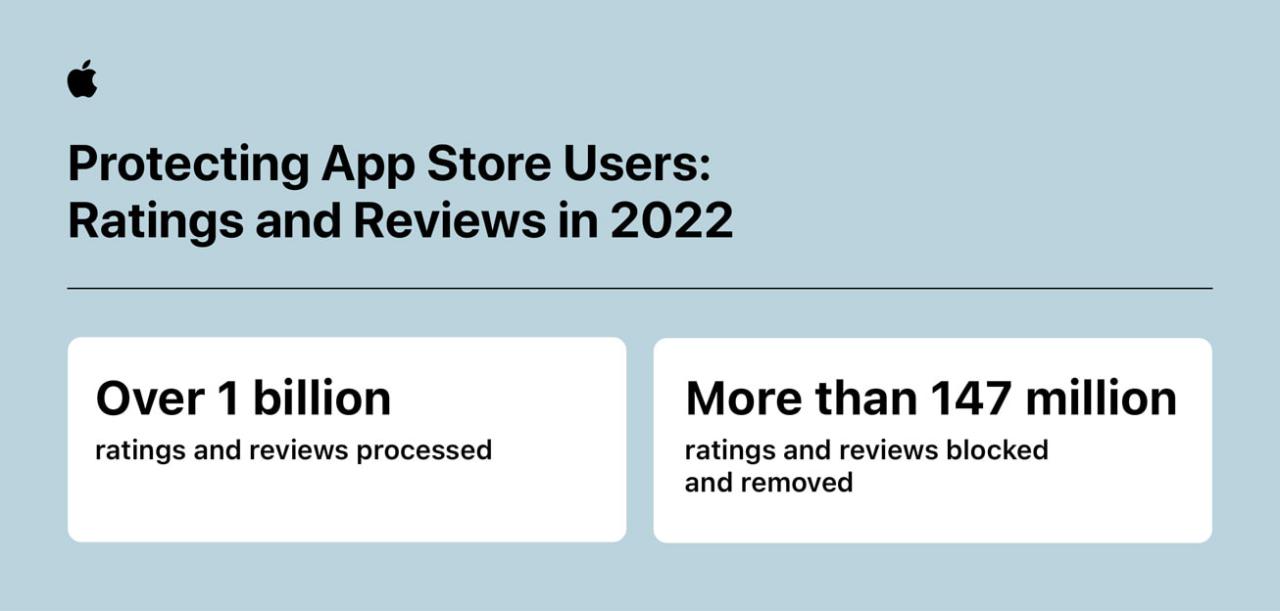
The resurgence of Apple’s fraudulent app reporting feature marks a pivotal moment in the ongoing battle against malicious software. While the previous iteration had its shortcomings, the improved system offers a more streamlined and effective way for users to flag problematic apps. This proactive approach, combined with Apple’s ongoing efforts to improve app review processes, signals a stronger commitment to safeguarding the App Store ecosystem.
Ultimately, the success of this initiative hinges on user participation—so report those dodgy apps!
Detailed FAQs
What kind of apps can I report?
You can report apps that are scams, contain malware, violate Apple’s guidelines, or are otherwise harmful.
How long does it take for Apple to respond to a report?
Apple doesn’t publicly state a specific timeframe, but generally, they aim to investigate reports promptly.
What happens after I report an app?
Apple reviews the report and takes appropriate action, which may include removing the app from the App Store.
What if my report is dismissed?
You can always submit additional information or evidence if you believe your report was unfairly dismissed.
Can I report an app anonymously?
While you aren’t required to provide personally identifying information, Apple may contact you for further details.
